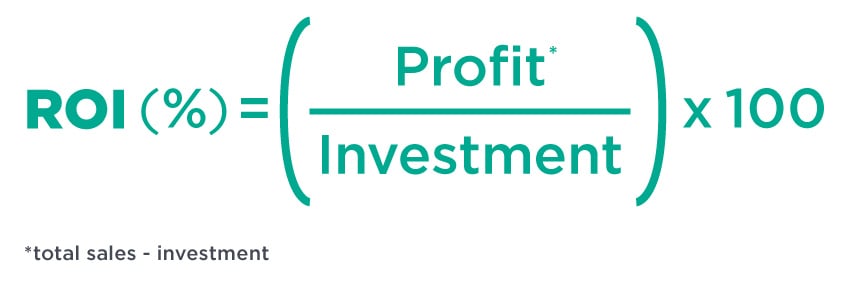How to Calculate ROI on a Business Loan
Return on investment (ROI) measures investment performance.
It calculates the profit as a percentage of the initial investment amount. A positive ROI means you will make more money than you invested.
ROI can be the critical difference between ugly debt and positive growth.
Why bother calculating ROI?
Running a business is exhausting, so why should you take time out of your over-packed schedule to dredge up your high school maths knowledge?
Because ROI can give you a precious insight into the potential return from your risk. Calculating the ROI on a business loan can give you an indication of how much growth opportunity lies ahead. It might just be the difference between taking on ugly debt and taking your business growth to the next level.
Risk versus return
It can be difficult to account for risk when calculating ROI, but if you haven’t calculated the total cost of your investment and the potential profit, how can you tell whether the risk is worth the gamble? Risk appetite is highly personal and you need to make a decision that’s right for your business circumstances.
There will always be a need for working capital. Working capital allows you to take advantage of the less risky investments like seasonal discounts or buying a bulk order. Restricted cash flow can make it difficult to produce working capital upfront, and that’s where a business loan can help your business grow.
The difference between good, bad, and ugly debt
When it comes to growing your business, it’s important to differentiate the different types of debt. Saying all debt is bad is an oversimplification and could limit your growth potential. As any business owner knows, restricted cash flow is not only frustrating, it can be devastating to the success of your business. That’s why it’s helpful to identify the three different types of debt: good, bad, and ugly.
Good debt
Good Debt is tied to a positive ROI. That means the cost of the loan or investment costs less than the value you get out of it. E.g. If you take out a loan that totals $20,000 for a business opportunity that increases sales by $60,000, that’s a good investment using good debt well.
Bad debt
Bad debt is any debt that costs more than you get out of it, also known as negative ROI. E.g. If you take out a loan that totals $20,000 for a business opportunity that increases sales by $10,000, that’s a bad investment. [NB: We’re not referring to Bad debt in the accounting sense, which is accounts receivable that will not be collected for whatever reason.] Bad debt is often taken on to cover sudden expenses or to purchase items that rapidly lose their value. Good debt can also turn bad if the debtor has no strategy to pay it off. You can help prevent good debt becoming bad debt by estimating the potential ROI of ahead of time.
Ugly debt
Ugly debt is bad debt that’s run out of control and into the hands of debt collectors. Obviously, good debt can turn bad and then become ugly – and quickly too. An overdue invoice can quickly spiral out of control to the point of incessant phone calls from debt collectors asking for the original debt plus their administrative fees, and interest. The key to quashing ugly debt is addressing bad debt early on. If you estimate the ROI of an investment and calculate a conservative timeline and plan for how you will repay your loan, you can avoid taking on bad debt. If your debt does turn bad, ensure you contact the lender early – before you default on repayments – and set up a payment plan. This will save you a lot of stress and potentially a lot of money in dishonour penalties.
Calculating ROI
Calculating ROI is quite simple. The hardest part is estimating the net profit you stand to make from your investment. The formula is: ROI(%) = (Net profit / Investment) x 100. The answer is a percentage of your initial investment.

The critical difference between profit and cash flow
How a Business Loan Can Help Your ROI
A business loan can be used for just about any business need you may have including inventory, overheads, business debt and staffing. When it comes to ROI, a business loan can help in two simple ways:
- It can act as working capital to fund the initial investment, or
- It can cover cash flow while you wait for the profit from your investment to flow into your cash stream.
1. Using a business loan as investment capital
If you need working capital to make the most of your investment, a business loan can help. Many opportunities come with a tight deadline, which means you need funding fast. Fortunately, QPF Brokers understand this and can often provide you with funds in 48 hours. But before you take out a loan, it’s important to ensure your investment will still net you a positive ROI.
2. Using a business loan to help cash flow after investment
Some businesses will have enough working capital to invest in their business without funding. But a challenge can present after the investment when cash flow is throttled because the business owner miscalculated how quickly the new profits would come in. Cash flow challenges are all too common for business owners, especially small business owners and newer businesses – that’s where QPF can help.
Business loans can be a cost-effective way to overcome cash flow challenges. If you need working capital to cover overheads, wages or other challenges that cash flow exacerbates, then give us a call on 1300 736 780 or get a quote.
